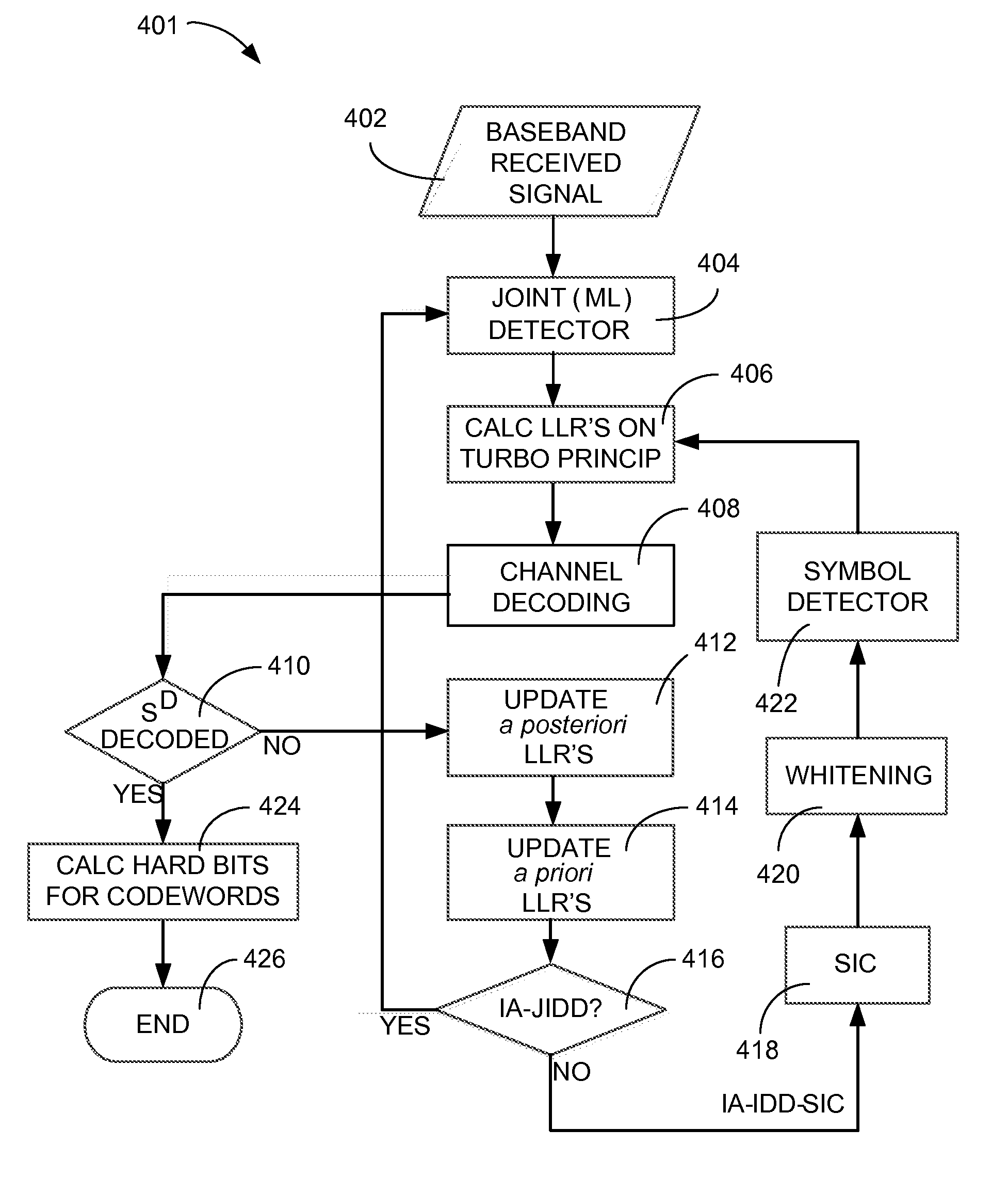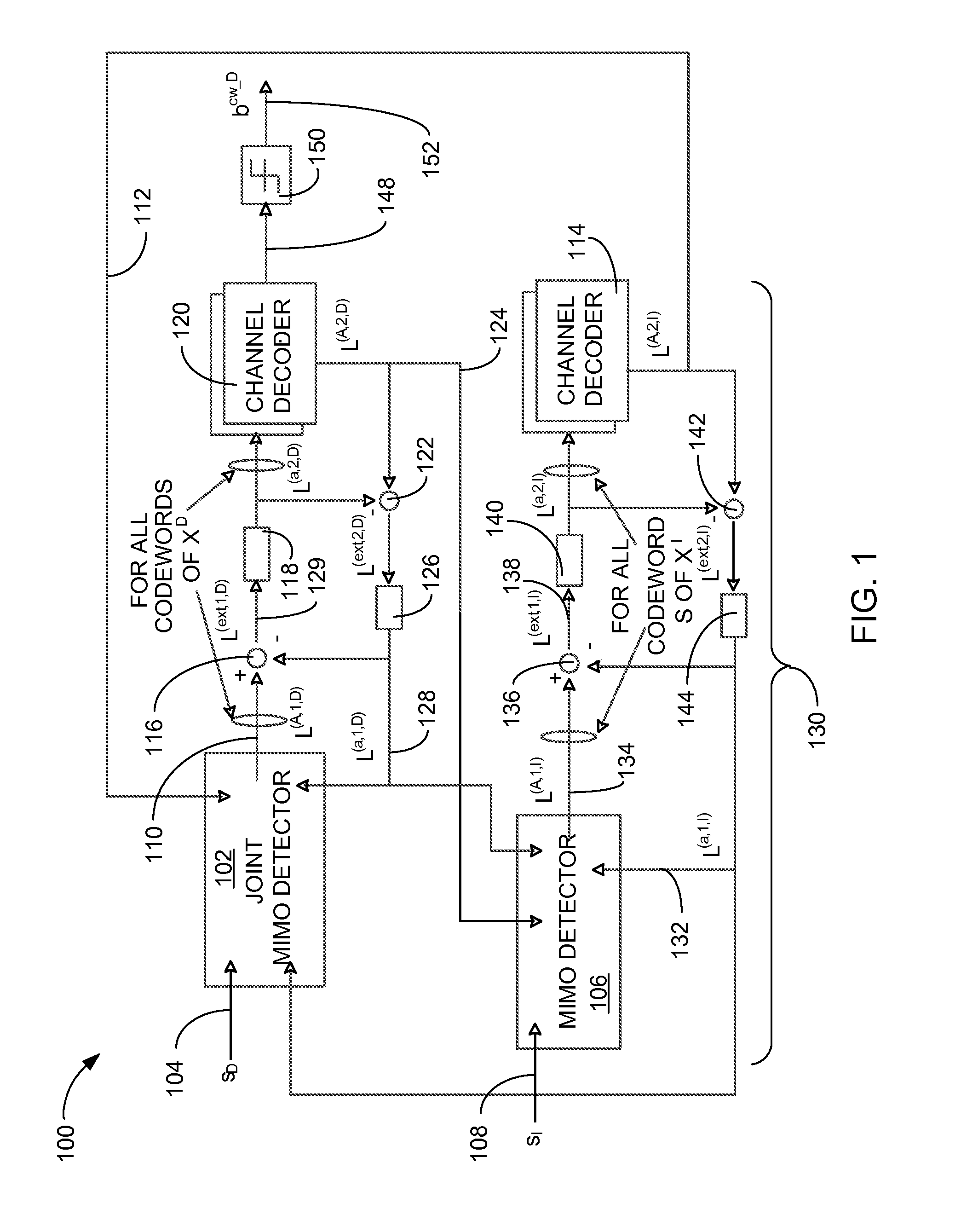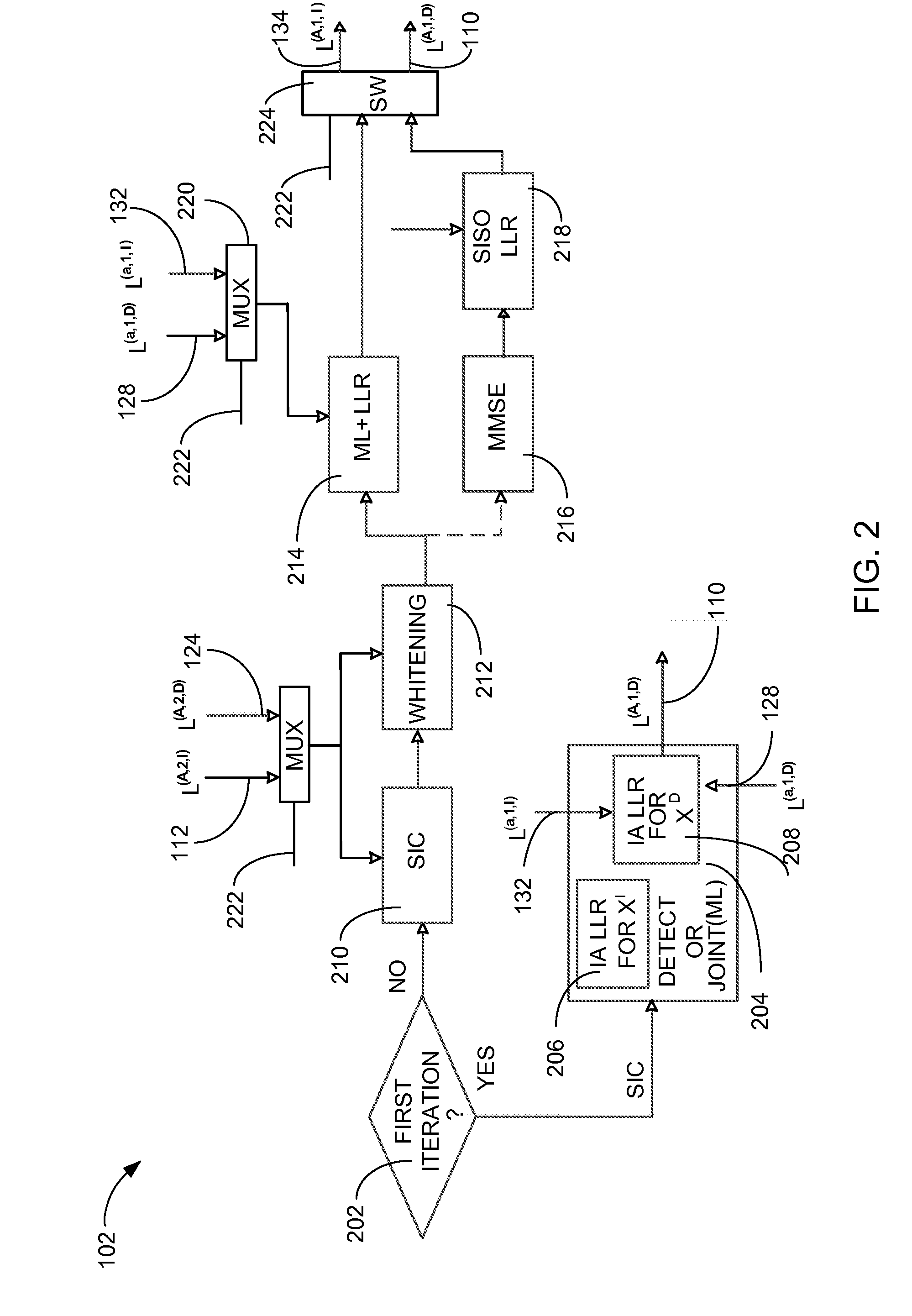Wireless communication system with interference filtering and method of operation thereof
- Summary
- Abstract
- Description
- Claims
- Application Information
AI Technical Summary
Benefits of technology
Problems solved by technology
Method used
Image
Examples
first embodiment
[0021]Referring now to FIG. 1, therein is shown a hardware block diagram of a wireless communication system 100 in the present invention. The hardware block diagram of the wireless communication system 100 depicts a first symbol detector 102, such as a joint multiple input multiple output (J-MIMO) detector, maximum likelihood (ML) detector with interference whitening, or a minimum mean square error (MMSE) detector with interference whitening followed by single-in-single-out (SISO) LLR block, for receiving a desired input signal 104. A second symbol detector 106, such as a multiple input multiple output (MIMO) detector, for receiving an interference input signal 108 that corresponds to the desired input signal 104.
[0022]The desired input signal 104 is defined as the selected input frequency and signal amplitude from a communication source, such as an eNodeB, a wireless base station, a communication transceiver, or a wireless hot spot. The desired input signal 104 can be degraded by t...
second embodiment
[0070]Referring now to FIG. 3, therein is shown a hardware block diagram of a wireless communication system 300 in the present invention. The hardware block diagram of the wireless communication system 300 depicts a first symbol detector 302, such as a joint multiple input multiple output (J-MIMO) detector, maximum likelihood (ML) detector with interference whitening, or a minimum mean square error (MMSE) detector with interference whitening followed by single-in-single-out (SISO) LLR block, for receiving the desired input signal 104. A second symbol detector 304, such as a multiple input multiple output (MIMO) detector, for receiving the interference input signal 108 that corresponds to the desired input signal 104.
[0071]The first symbol detector 302 can include the first interference aware log-likelihood ratio module 206 and the second interference aware log-likelihood ratio module 208. The first interference aware log-likelihood ratio module 206 can calculate the interference log...
PUM
 Login to View More
Login to View More Abstract
Description
Claims
Application Information
 Login to View More
Login to View More - R&D
- Intellectual Property
- Life Sciences
- Materials
- Tech Scout
- Unparalleled Data Quality
- Higher Quality Content
- 60% Fewer Hallucinations
Browse by: Latest US Patents, China's latest patents, Technical Efficacy Thesaurus, Application Domain, Technology Topic, Popular Technical Reports.
© 2025 PatSnap. All rights reserved.Legal|Privacy policy|Modern Slavery Act Transparency Statement|Sitemap|About US| Contact US: help@patsnap.com



